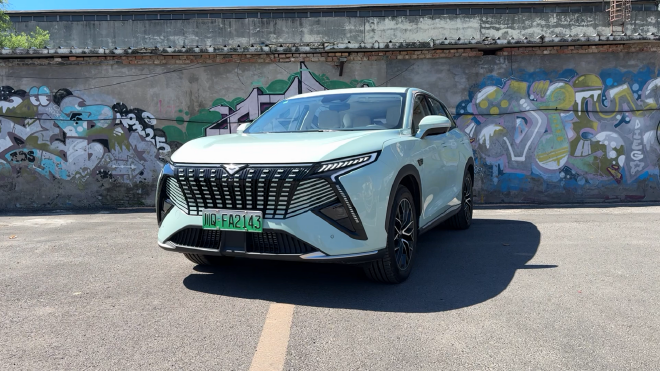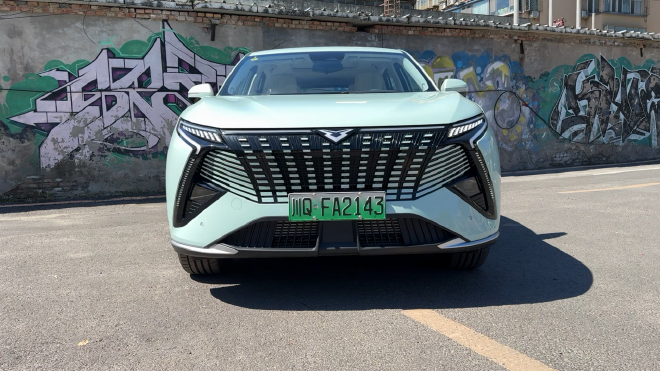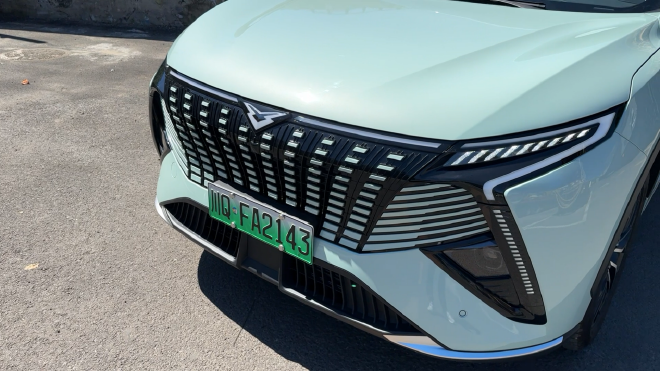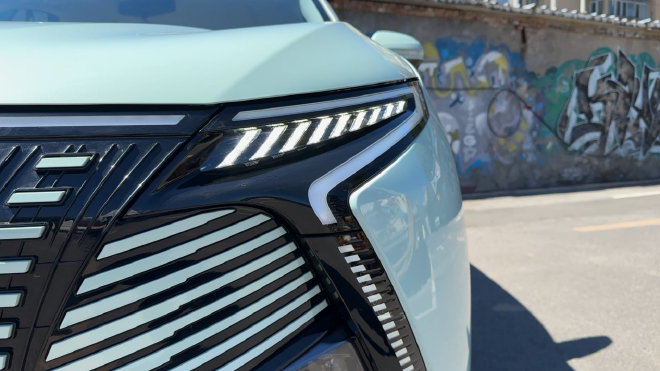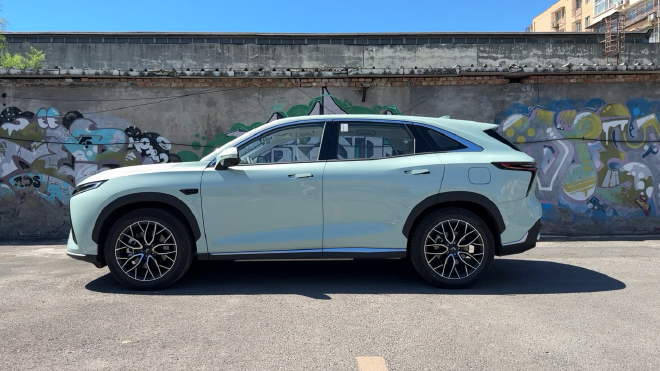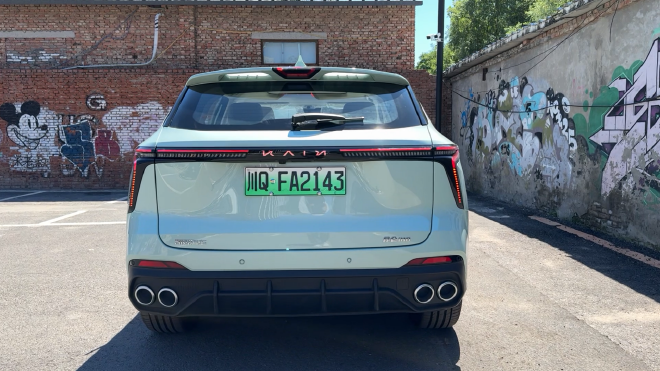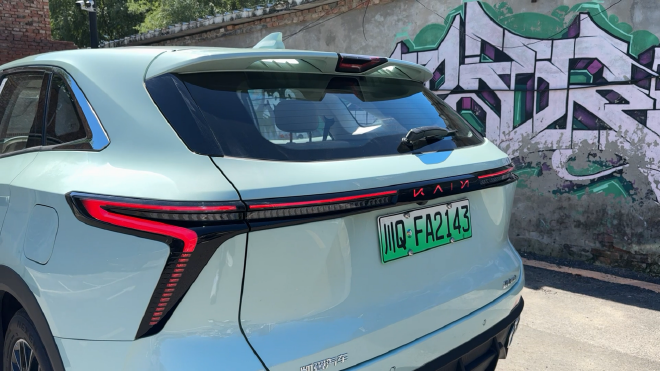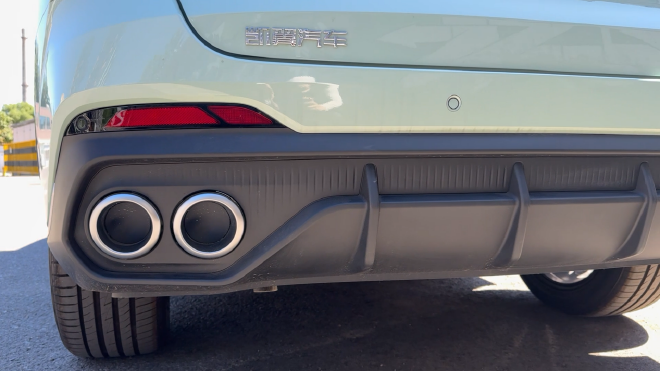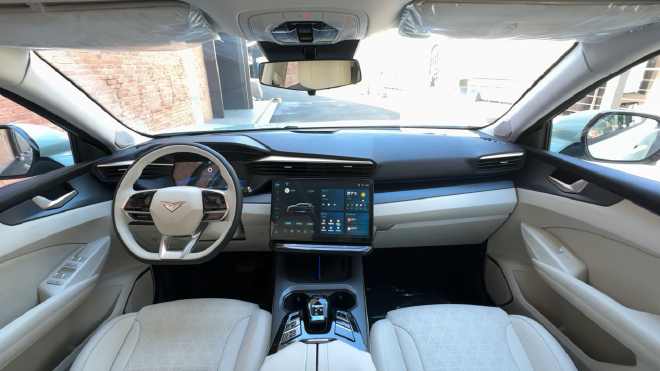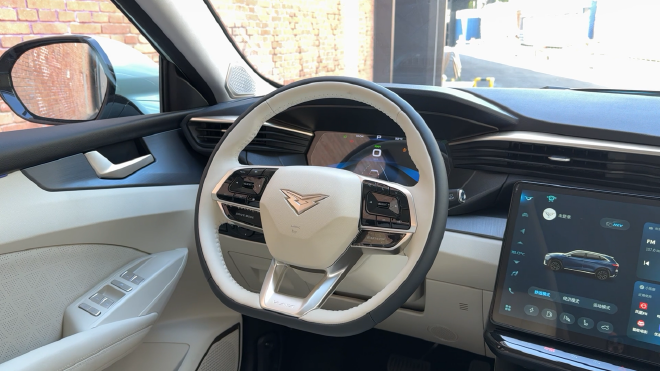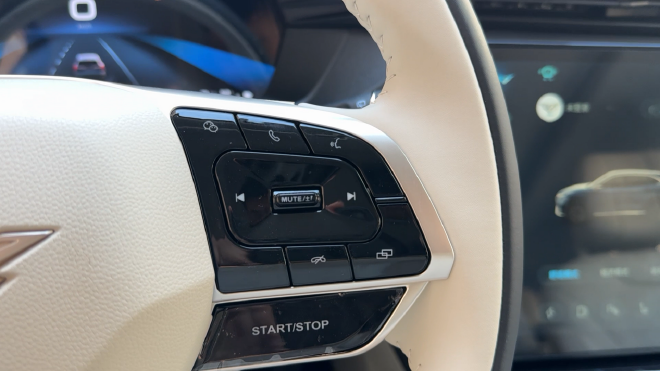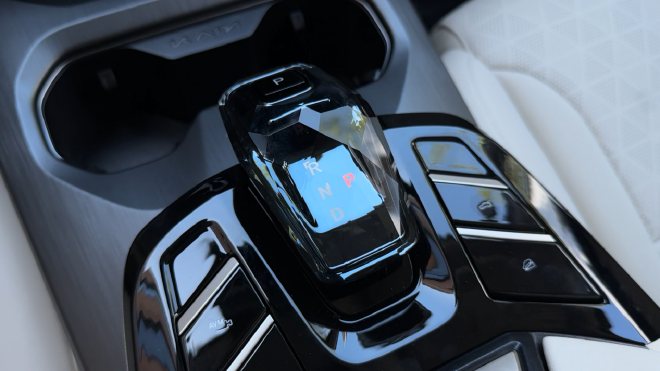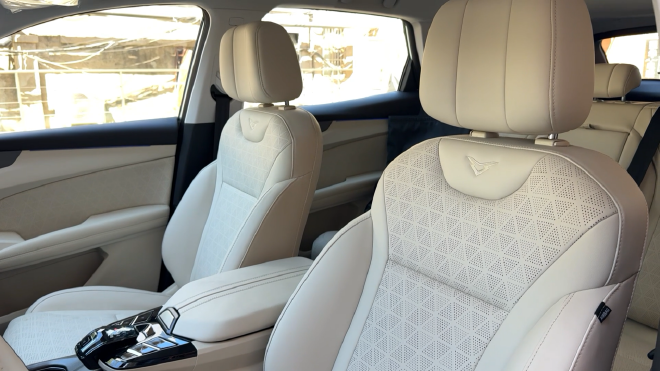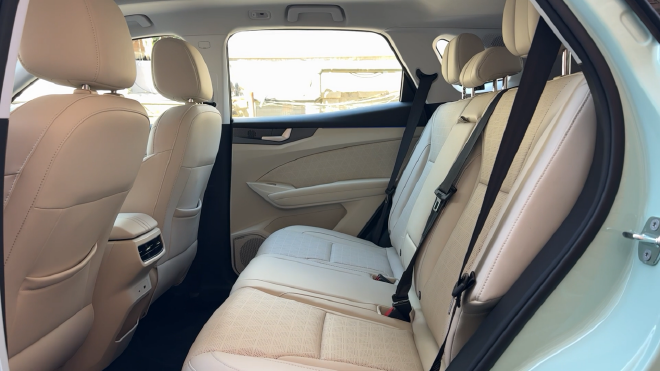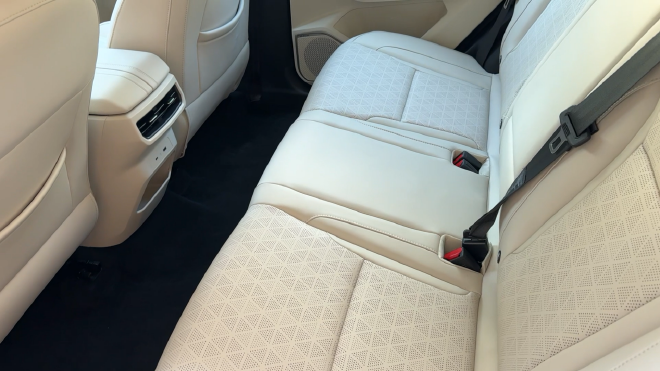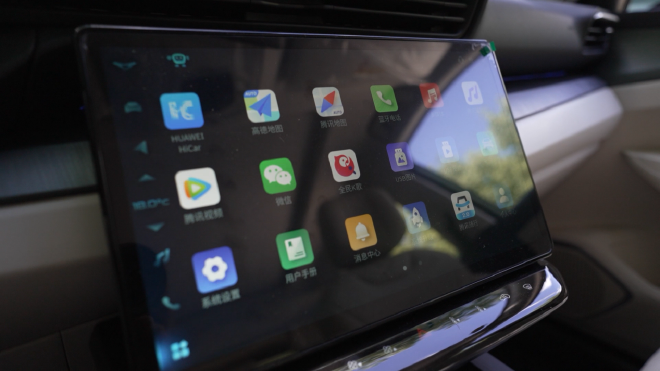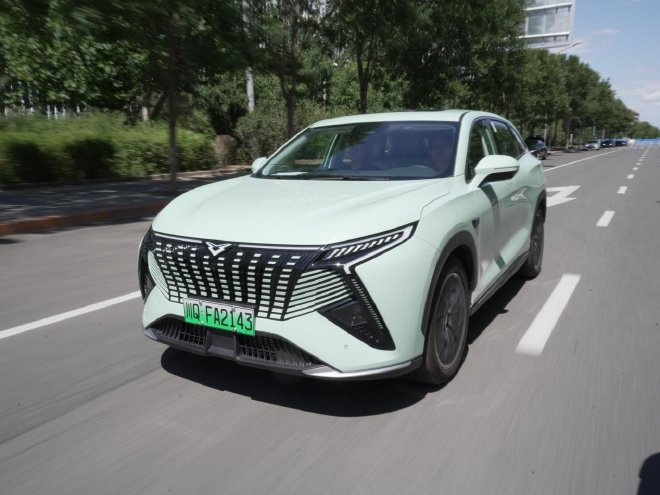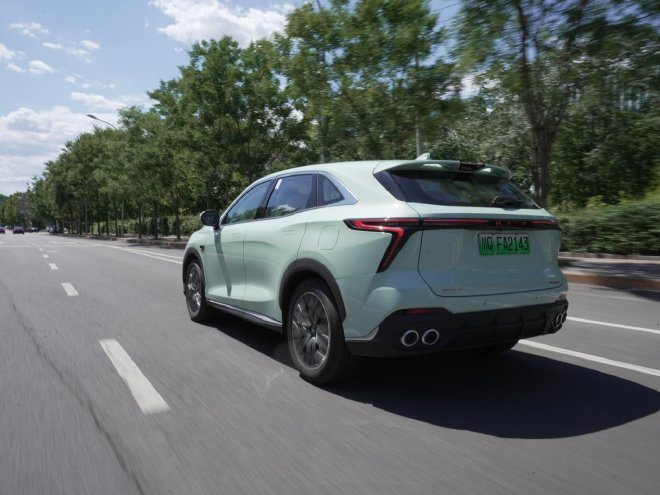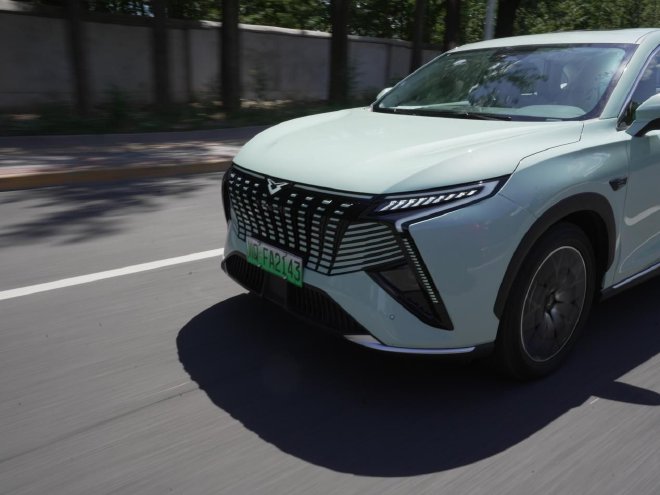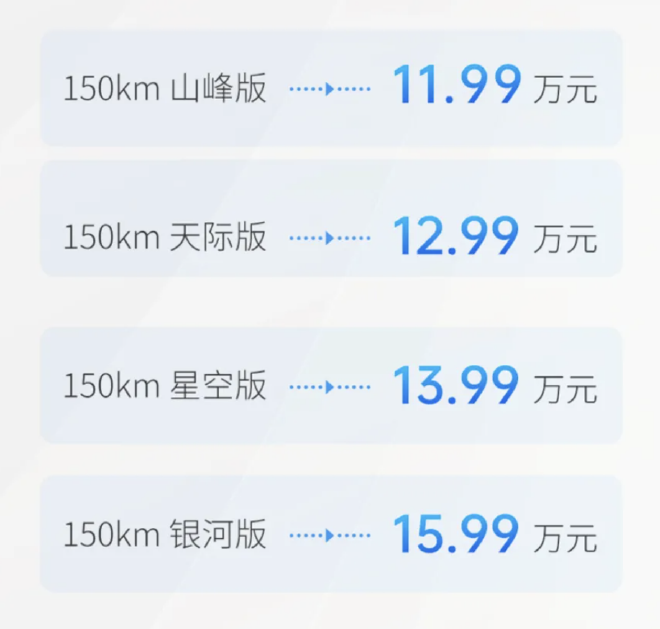Some say electrification is the first half of the competition in the automotive market, and the trend is becoming clear. The focus of the second half will shift to intelligence. From a technical and industry perspective, this seems reasonable. With the rapid spread of products and related knowledge, controversies and conflicts surrounding new energy vehicles have decreased in recent years. Instead, topics such as intelligent cabins and autonomous driving are gaining popularity. However, from a market perspective, the electrification process is far from over. It has even sparked a new wave, the “counterattack” of hybrid models. Various types of hybrid models, once seen as a brief transition between pure electric and fuel, are now challenging this view as hybrid technology continues to mature and develop. Strong products have emerged in the past two years, with the Kaiyi Kunlun iHD we test drove being one of the representatives.
Appearance reflects design skills. Even if you are not familiar with the young brand of Kaiyi, you will likely be impressed when you see this car for the first time: different from some increasingly similar products on the market, the rich details and personalized family elements give the appearance of the Kaiyi Kunlun iHD a very strong recognition.
All thanks to Italian designer Loewe Weimash. The new car basically follows the design language of the Kaiyi Kunlun in appearance. According to official information, its overall design inspiration comes from the magnificent and vast lines of the Kunlun Mountains. This is well reflected in the front part, with the grille composed of dot matrix decoration and sharp horizontal lines, full of power and stability, complex but harmonious; paired with borderless straight waterfall grille and induction headlights, creating a sense of sportiness and fashion overall.
The new car headlights also focus on individuality, with irregular shapes and lines blending well into the front design. The brand logo in the strip of lights further enhances overall recognition.
The side lines of the car are dynamic and smooth, without the bulky look of many electric cars, even showing a sense of diving and crouching. According to official information, the side design is inspired by the posture of a snow leopard preparing to hunt. Interestingly, the sharp waistline that rises from the front fender gradually disappears as it extends to the door, only to reappear at the rear fender, perfectly connecting like a dragon swimming underwater with only its head and tail showing, full of freshness.
Like many new energy vehicles, the new car also features electric concealed door handles, which not only look better but also reduce aerodynamic drag. The dimensions of the new car are 4738*1968*1708mm in length, width, and height, with a wheelbase of 2820mm. The design of the rear of the car is relatively simple, but there are still many noteworthy points. Similar to the front of the car, the slender through-type taillights integrate the brand logo’s English letters in the middle, emitting light. The taillights invade the sides of the car and then make a very beautiful downward curve, echoing the shape of the headlights.
Above the rear of the car, there are high-mounted brake lights and a hollow spoiler, which enhances the overall style and adds a sporty touch to the vehicle.
The rear diffuser is quite large, which helps reduce drag. However, the dual exhausts only serve a decorative purpose.
From the exterior design, the Kaiyi Kunlun iHD is definitely an underestimated model in the market. Despite positioning itself as a cost-effective option, the design shows a lot of effort and attention to detail. In terms of design alone, the Kaiyi Kunlun iHD should be a rare and unique model in the 100,000-150,000 price range. Practical interior design The interior design remains consistent with the fuel version, and I personally like the new owner’s side LCD instrument panel and air conditioning vents design. The sharp lines even create a sense of combat. The central LCD screen slightly leans towards the driver. Although the model is aimed at family use, effort has been put into creating a driving experience.
The multifunction buttons on the flat-bottomed steering wheel integrate a variety of functions. The start/stop button is even placed in this area. Upon closer inspection, you will notice that the new car even has a dedicated answer button for WeChat in the vehicle.
The crystal gear lever is unique in design, allowing for easy shifting. However, the operation could be improved for a better user experience. Hope for enhancements in the future.
The overall quality and comfort of the seats are good, the perforated leather material feels soft enough, and there is brand logo embroidery below the headrest. The new car’s front seats are designed with zero gravity, and the seat foam material is overall soft. However, as a family car, the new car seats do not overly emphasize a sense of wrapping.
The rear space performance is good, with a wheelbase of 2820mm accommodating four to five people for daily travel. With advances in technology and integration of power systems, the overall structure of plug-in hybrid models has changed significantly, bringing considerable improvements to rear space and comfort.
The car we test drove this time is the 5-seater model, with 5-seater and 7-seater models to be available later. The 7-seater model features Easyentry function on the right side of the second row seats, which can slide forward and flip, providing convenient entry and exit space for the third row passengers.
In terms of intelligence, there are also some small surprises, the new car’s card-style UI design is very practical, the main functions are arranged in zones on the homepage, easy to access, the operation logic is very simple.
Popular apps and smart voice assistants are all present. As a plug-in hybrid model, EV/HEV mode switching also supports voice control, as well as multiple command conversations and fuzzy semantic understanding.
“Counterattack” of the plug-in hybrid Power is undoubtedly the highlight of the Kaiyi Kunlun iHD, with iHD standing for intelligent Hybrid Drive. The new car is equipped with a 1.5T hybrid efficient engine + super hybrid E-CVT gearbox and dual motor system, with the engine having a maximum power of 102kW and maximum torque of 231N·m, and the permanent magnet synchronous motor having a maximum power of 150kW and maximum torque of 300N·m, with acceleration time of 7.7 seconds per hundred kilometers.
In terms of structure, the new car uses the P1+P3 motor layout. The P1 motor is responsible for generating electricity and auxiliary power output, while the P3 motor is responsible for power output and kinetic energy recovery. This has been the ace in the hole for hybrid models for a long time. In city driving, electricity is used, in long-distance driving, hybrid mode is used, and in high-speed driving, the engine is directly driven. Balance is achieved between energy consumption, power, and range in different scenarios. As for the battery, the new car uses CATL lithium iron phosphate batteries. The battery capacity is divided into two types: 12.9 kWh and 22.48 kWh. The range in pure electric mode is 80 kilometers and 150 kilometers respectively.
During the nearly day-long test drive, the new car’s power system left a good impression. Acceleration is quick and smooth, unlike many electric car models that jerk when pressing the throttle. It is capable of handling the majority of daily driving situations.
In terms of chassis, the Kaiyi Kunlun iHD is based on the Kaiyi i-FA platform, using a front MacPherson rear multi-link suspension combination similar to the Chery flagship SUVs such as the Tiggo 9 and the Xingtu Yaoguang C-DM. Despite its soft comfort tuning, there is no swaying feeling when driving, especially when changing lanes quickly, the body can keep up quickly. In addition, in some scenarios of rapid acceleration and strong braking, the stability of the new car is also impressive, with noticeable resistance and suppression of body roll by the chassis. The intervention of the energy recovery system when releasing the throttle is also very smooth. This undoubtedly helps reduce motion sickness for passengers.
Although the Kaiyi Kunlun iHD is marketed as a “hybrid,” after a day of experience, it gives the impression of being a fairly balanced product in terms of design, workmanship, intelligence, and driving experience, meeting or even exceeding our expectations. The new car’s pre-sale price is between 119,900 and 159,900 yuan (22000$), a highly competitive range in the current market where users are sensitive to both price and product. Kaiyi still needs to continue to strengthen its brand awareness and expand its influence. With strong product capabilities, how to sell the car is another complex issue. Let’s look forward to its performance after it is launched.
